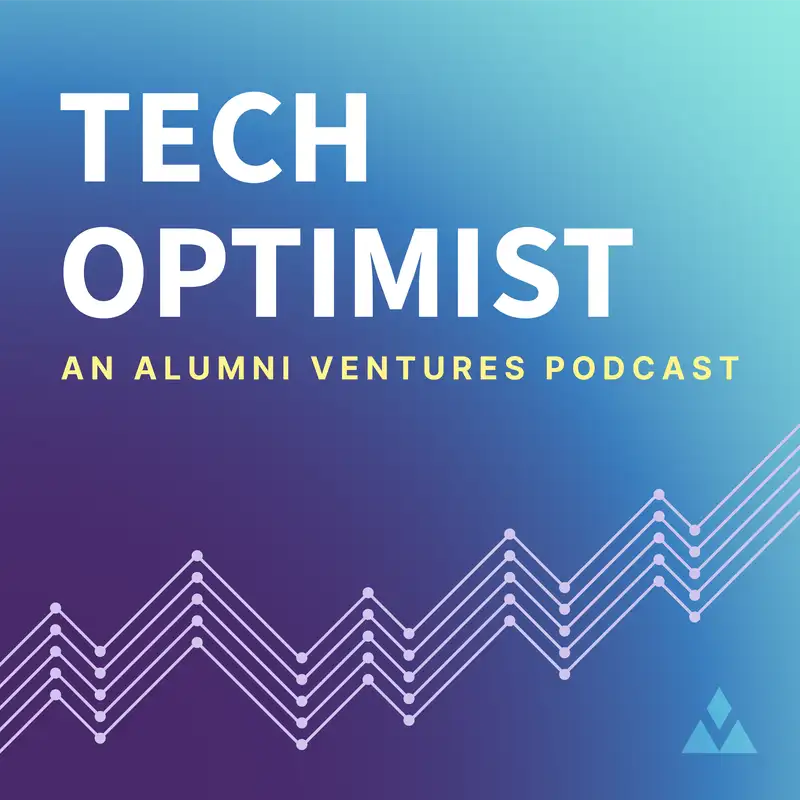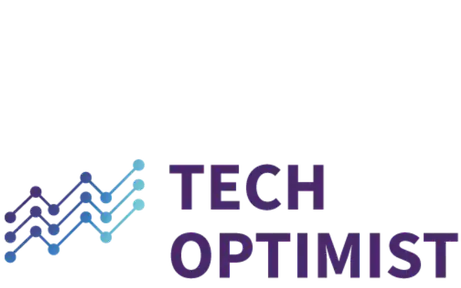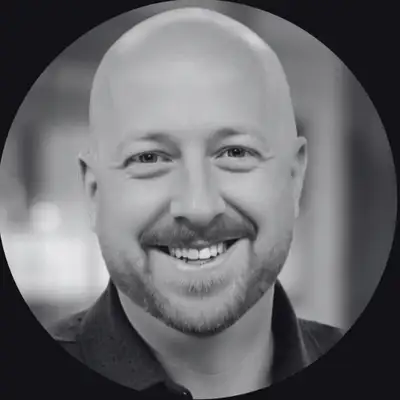#34 - Three Breakthroughs: AI Spot Mass Shooters, Quantum Material Breakthrough, and CAR-T Show Promise With Brain Tumors
Sam Herrick:
Can AI stop a mass shooting? Let's find out.
Mike Collins:
The solution is not easy to these issues, but here is a company that is trying to do something about it, which is, again, you set up these cameras, they're portable-
Matt Caspari:
And what they were doing is they were replacing specific atoms with 57 other elements.
Mike Collins:
... just literally profound results. Like, can't find the tumor kind of thing.
Sam Herrick:
Hello everyone. Welcome back to this episode of The Tech Optimist, Three Breakthroughs. Some housekeeping to get out of the way. Some of the voices that you'll hear today are Mike Collins, the founder and CEO here at Alumni Ventures. Matt Caspari, a managing partner here at Alumni Ventures. And of course, myself, Sam Herrick, your guide, editor, and tech note writer for the show. Let's get into it.
In a world captivated by criticism, it's easy to overlook the groundbreaking technologies shaping our future. Let's a light on innovators who are propelling us forward. As the most active venture capital firm in the US, we have an exceptional view of tech's real-world impact. Join us as we explore, celebrate, and contribute to the stories of those creating tomorrow. Welcome to the Tech Optimist.
As a reminder, the Tech Optimist podcast is for the informational purposes only. It is not personalized advice, and it's not an offer to buy or sell securities. For additional important details, please see the text description accompanying this episode.
Mike Collins:
You have one today. Yeah.
Matt Caspari:
Okay. Okay. I had a backup just in case, but-
Mike Collins:
Anything else going on before we dig into it?
Matt Caspari:
I'm calling in from Paris, so yeah, that's going on.
Mike Collins:
You out for there for the Olympics? Are you competing?
Matt Caspari:
Yeah, my wife's been out here for work, so yeah, I came out with the kids. So we've got a couple Olympics events and seeing friends, so yeah, pretty awesome trip.
Mike Collins:
You know, I tried to... They're going to LA, and I go to my wife, I go, "Oh, we should go." And she was like, she couldn't have been more negative. She was like, "Oh, the crowds, you don't get to see shit. You want to watch it, you want to watch it on television."
Matt Caspari:
Yeah, this is the emptiest I've ever seen Paris, so it's very interesting. I think no one's shown up. I think the opening ceremony is not for a few days, but the people in the restaurants are kind of freaking out. They've shut down the whole city, no one's here. Very-
Mike Collins:
Everybody wanted to rent their apartment probably to people that-
Matt Caspari:
Yeah. Maybe the crowds are about to come, but as of right now, the city is weirdly empty.
Mike Collins:
File that away. File that away.
Matt Caspari:
I have a feeling LA may be pretty different, but.
Mike Collins:
Yeah. Yeah. Again, I'm not sure how much of it was LA, versus going somewhere cooler, or just generally.
Matt Caspari:
I've never been, my wife's been to a couple.
Mike Collins:
She likes it, but I think she wants to view it like... I agree that like, watching the bicyclists go by. I don't know.
Matt Caspari:
Yeah, I've never been, my wife's been to two Olympics, so I'm pretty excited.
Mike Collins:
I've never been either, and it sounds kind of interesting to me.
Matt Caspari:
Yeah, we're going to see the US Men's play France in soccer, so I've never been to a big soccer game, so that'll be cool.
Mike Collins:
Well, that'll be fun.
Matt Caspari:
Yeah.
Mike Collins:
Buy a kit.
Matt Caspari:
Yeah, yeah.
Mike Collins:
All right, let's get into it. All right, welcome to Alumni Ventures, and our Tech Optimist podcast. This is our Three Breakthroughs show where we get together and talk about interesting innovations, cool companies, scientific breakthroughs that we think can change the world. So welcome to this week's show. I think Matt, I go first this week, right?
Matt Caspari:
Sounds good, yes.
Mike Collins:
All right, so I've got two. The first one I'm going to talk about is in the context of, and I'm going to give a little preamble, AI. There's been a lot of buzz lately, and people writing articles kind of taking the counter trade, which is hundreds of billions of dollars going and building into this infrastructure, and there's no revenue, and-
Matt Caspari:
Yeah, when do we get our ROI?
Mike Collins:
[inaudible 00:05:12] ROI. So on the surface, it's a reasonable question. I think all the analysis I've seen has really underestimated the cost savings that customers get. Meaning it's one thing if you're a provider and you get revenue, and I'm going to pick Microsoft. So I can sell cloud services and I can get revenue. I think the other side of this is we're looking at companies that are trading at 30 times revenue, and not only Microsoft, but their customers.
If they can spend a dollar of AI and save a dollar of labor. If it's a $250,000 a year employee that you don't need to hire, and you have to put a 30 multiple on that, so that's 6 million, $7 million per employee, of every employee that you don't have to hire because you're using AI. I haven't seen enough of that kind of analysis in, so.
Matt Caspari:
Yeah, no, agreed. And just the increase in productivity you can get by shifting someone's time to higher-output activities. And some of that takes time, a lot of these tools are still pretty new. So yeah, I think there's more to come.
Mike Collins:
So I wanted to jump, use that as a backdrop to drop into my first point, which is a very specific use of AI that I think solves a real problem. And so this is a company called ZeroEyes, and what they do is they use a combination of cameras, and AIs, and learning to identify mass shooting prospects. So they scan, you go to a public event like a political rally, you set up these cameras around, and you-
Matt Caspari:
It seems obvious that we should have this kind of technology.
Mike Collins:
Well, this is obviously very timely, and the reason I chose it, which is we had a really tragic example again of a young male with a military grade gun going into a public space and creating death and havoc. And the solution is not easy to these issues, but here is a company that is trying to do something about it, which is, again, you set up these cameras, they're portable. I have the ability to detect these weapons before, and better than people that are wandering around. And oh, by the way, this example from the Trump rally, there was the Secret Service was there, there were people up on rooftops and they missed it, and it was too late and all of this kind of stuff. This isn't a music festival at a county fair where there may be a couple of local police people wandering around.
Matt Caspari:
And we've talked about drones in the past. I mean so far, as far as I know, it hasn't come out that there were drones used in that situation, which I think surprised a lot of people. Does this company use drones? Or do you know where they're locating-
Mike Collins:
No, this company uses cameras on basically portable telephone poles.
Matt Caspari:
Okay.
Mike Collins:
So you go in and you create a perimeter and you set up these things, you drive them in, they feed them. Again, the details of how they feed that into a communications vector, because it's one thing for the AI to identify it, then you need to get it to people that are going to do something about it in a very timely fashion. I think the main point I'm trying to make is here's a company, this was started by a former Navy SEAL, kind of after the Parkland High School shooting. It looks at an incredible number of images, it does it in a way that is super intelligent, and the demo is really impressive, and company's taking off, obviously. So again, problems, solutions, that's how we're wired.
Matt Caspari:
Yeah, great text-
Mike Collins:
... to look at things, but this is a case where you're talking about the power of cheaper cameras, drone technology, you mentioned Matt, AI systems, state-of-the-art communications, you got to stay ahead of this stuff. So I just thought it was a very interesting, and obviously very timely example.
Matt Caspari:
Yeah, that's a great one.
Sam Herrick:
I mean, wow. I looked into this company ZeroEyes, I'm going to, of course, like my MO, I'm going to play their sort of mantra video on the technology and how it works. But first I wanted to add a little bit more context as well to the point that Mike made earlier about AI, and if companies are using them, putting more money into AI rather than actual labor and staffing, and kind of what those numbers look like.
So Deloitte University Press published a report recently called, How Much Time and Money Can AI Save Government? Highly recommend to read, the article is really fascinating. Cognitive technologies could free up hundreds of millions of public sector worker hours. Pretty much this article exemplifies how the government sector might use AI within their everyday operations. So I'm going to read a few segments of it. All kinds of [inaudible 00:11:53] today run on data, and that means endless staff hours spent inputting, processing and communicating.
The work needs to get done, so someone has to spend that time picking away at a keyboard. But who or what that someone is, is what is in question here? So I'm going to read the first segment of their introduction. The promise of reducing or even eliminating all of that drudge work is one reason why many managers are enthusiastic about new applications based on artificial intelligence. Finally, staff resources could be freed up to do real work, with people having time to focus on creative projects and deal directly with clients and customers.
So again, we have this argument where AI is used as a tool, it's not used as a replacement for jobs or labor hours. AI is, with companies like this, designed to take the positions within these systems that just need a brain. When that actual brain from a human is more creative, and design-orientated, and more social. And so then that social, smart human can be put to other work that is more important and more enthusiastic towards the company's mission.
So this is what Mike was saying at the first part, whereas when we talk about ZeroEyes in this company, a human brain doesn't have enough time to process like, "That is a threat. This person is holding a threat within a vulnerable community or a vulnerable building. Let's get response going." Right?
So then ZeroEyes is this automatic system that's placed within already existing security cameras. Or like Mike was saying, in those portable ones, those portable telephone poles that you can put around large scale events, and all that fun stuff. So ZeroEyes then is doing that brain work that a human may have trouble doing when that human could be used otherwise. And hopefully this other brain, this AI brain that is sorting through hundreds of thousands of images from the security cameras, can identify the threat. So without further ado, I'll stop you yapping. Here is a video from ZeroEyes, and then we're going to hop into a quick break, and then we'll hop right back in. All right, enjoy.
Rob Huberty:
ZeroEyes is a team of former Navy SEALs and military special operations veterans teamed up with elite technologists with a mission to save lives. We use your existing video cameras coupled with our artificial intelligence gun detection to prevent threats, rather than react to them. There is no better purpose right now and no more difficult problem to solve than mass shootings.
Mike Lahiff:
We go over the existing security cameras at a building, so on the interior and exterior at entrances, exits, choke points, bottlenecks inside the hallways. So when a shooter walks up and they take out a weapon, ZeroEyes system will pick that weapon up. And our military trained operation experts verify every detection before setting out alerts to local staff, security, and the local 911 center to get the alert to first responders.
Rob Huberty:
It takes about three seconds from the time a gun enters the frame of a camera to the time an alert is sent.
Mike Lahiff:
So now they know what the shooter looks like, what type of weapon they have.
Speaker 6:
You have an armed subject in the southwest hall.
Mike Lahiff:
How many there are, and what was their last known location.
Rob Huberty:
First responders on scene have access to this information before shots are fired.
Mike Lahiff:
That will allow them to go directly to the shooter and prevent more violence from occurring.
Speaker 6:
Drop your weapon now.
Speaker 7:
Drop the gun. Drop the gun.
Mike Lahiff:
So we could really decrease response times and save lives.
Speaker 7:
Turn around.
Mike Lahiff:
So we're going to stop threats at first sight, not first shot.
Rob Huberty:
Mass shootings are devastating. Current alternatives are reactive. We need a proactive solution that mitigates gun violence, provides actionable intelligence, reduces response time, ultimately saving lives, while at the same time respecting our privacy and rights. ZeroEyes is that solution. Save time, save lives.
Brian Graham:
Here in Grand Island, we are north of Buffalo and south of Niagara Falls, and one of the major events that happened was the shooting at the Tops in Buffalo, New York. It was a mass shooting, and it brought home the idea that there are probably more strategies that we can employ in our district to keep our students and staff safe. We have a really awesome team from all over Western New York going to come see how the software works.
Speaker 14:
The whole concept came from turning that traditionally reactive camera into a proactive gun-detection system.
Brian Graham:
We're going to have a live demonstration. The attendees not only will learn about the product, but also get a chance to see how effective it is in communicating to the key people that a district would identify to get this information.
Speaker 14:
Someone in the office calling our direct point of contact, relaying this information.
Speaker 9:
So you're able to have this desktop dashboard up, as well as receiving the SMS notifications, as well as receiving the notifications on your mobile app.
Brian Murphy:
Navy Pier is a big open parkland, really, where we have a lot of different entertainment. It's a free area for people to come visit, which is hard to secure. So adding this feature, I think just helps us with another layer of security.
Speaker 11:
You'll be able to see Kevin as he walks the cameras, in front of the cameras. And then our dispatch center is with us remotely, they will be dispatching the alerts.
Speaker 12:
Once the algorithm gets the detection, you're going to see the single-frame image come in with a red bounding box around the weapon where the analyst is going to make the determination of, "Yes, this is a gun," or "No, it's something else."
Brian Murphy:
Greatest value that ZeroEyes offers is the human intelligence side, with the former military personnel, and using their experience with weapon identification.
Speaker 12:
Truly, their sole purpose is to make sure every detection the AI makes is an accurate detection.
Brian Graham:
It is super impressive to see how fast the information flows, and how quick we can react to keep kids safe.
Speaker 12:
And we're stopping the threat at the first sight of a gun, not after the first shot of been fired.
Brian Murphy:
We did test this for a good nine months, and be honest with you, they've been a hundred percent on right now.
Speaker 15:
Probably one of the greatest inventions that we've had in recent years, to be honest with you.
Speaker 16:
It's real-time info, and that's huge.
Speaker 15:
Now that I've seen how the system works, it's very good.
Speaker 17:
I thought the presentation was great, it was well-prepared. I really think that it would be beneficial for any school districts in, throughout the country.
Speaker 18:
I thought it was very informative, and I think it incorporates well, actually, into our school system.
Speaker 19:
It sent the alert to my phone, be able to zoom in and see what hallway where the location was.
Speaker 20:
And seconds are crucial. And if you're saving seconds or minutes detecting weapons, it's really going to help not only the first responders, but the life-saving measures.
Brian Graham:
This identifies the threat before they enter if the gun is brandished, and that to me changes everything.
Matt Caspari:
Hey everyone, just taking a quick break so I can tell you about the Deep Tech Fund from Alumni Ventures. AV is one of the only VC firms focused on making venture capital accessible to individual investors like you. In fact, AV is one of the most active and best-performing VCs in the US, and we co-invest alongside renowned lead investors.
With our Deep Tech Fund, you'll have the opportunity to invest in innovative solutions to major technical and scientific challenges, which can have a hugely positive effect on society. Companies that have the potential to redefine industries, and create a more sustainable future, and deliver significant financial returns. So if you're interested, visit us at av.vc/funds/deeptech. Now back to the show.
Mike Collins:
Great. All right. What do you got?
Matt Caspari:
Yeah, so I came across an article this past week that was published by the Department of Energy's Lawrence Berkeley National Lab, or short, just call it Berkeley Lab. So what they were showcasing was this really innovative approach that researchers have taken to find breakthrough materials for quantum applications.
So quantum materials, just really quickly, these are materials that can have what we find to be very unusual properties because of quantum mechanical effects. So they can potentially do these amazing things such as conduct electricity without any loss, completely change their properties with just a small change in temperature or a magnetic field. And what this article goes through is kind of the way that scientists historically create quantum materials, and the way they do this is they create defects in materials. So they're actually going in and replacing one type of atom in a material with a different atom. The problem is that these defects are very hard to create. So the way that scientists have done this is they create a lot of defects, then they evaluate them one at a time.
And if a material doesn't have good properties, which is usually the outcome, they go back and they repeat the whole process. If it does show an interesting property, then they need to try and figure out what's going on and why. So there's just a massive number of combinations and possibilities, you can replace these atoms with all kinds of different elements, you can put them in different places. So what that means is it actually can create decades of work to screen and find defects in just one type of material. So where this starts to get interesting is this team flipped the process. They started with theory, and then they finished with experiments.
And the high-level idea was to use theoretical computation as a guide. To upfront identify what they thought would be a much smaller number of promising defects. And after they'd screen those using computation, then they'd actually fabricate the material.
So they went through this, they predicted 750 different defects in a specific material, and what they were doing is they were replacing specific atoms with 57 other elements. So they go through this whole long process, and at the end they found one material that had interesting properties, and this was a defect that had never been shown before. No one had ever seen this. So then they went to the step of actually making the material. They evaluated the defect, it actually worked.
So this is pretty cool. They're able to fabricate materials, they're able to replace specific atoms. They actually had this quote that I thought was kind of interesting in the article. So they knocked out a bunch of sulfur atoms in this material leaving these tiny little holes. They then applied a mist of cobalt atoms to the surface, and then they used the sharp metal tip of a scanning tunneling microscope to find a hole and nudge a cobalt atom in. They said "similar to putting and golf," pretty wild.
And then they make this another analogy, there's a quote in the article is, "We're essentially playing with atoms like Lego bricks." So, pretty wild. I think we're about to see a lot of interesting things happen in material science. We've talked about this a bit in the past, but this ability to just rapidly accelerate and change the whole scientific process using the power of computers, and also these super state-of-the-art tools, I think we're in for some interesting things coming.
Mike Collins:
Very exciting time. I mean, this reminds me a little bit of work being done with proteins, and protein folds, and things that we're just hunt and pack, and slow, and labs, and you're doing this now with technology, and software, and super advanced tools, and-
Matt Caspari:
Yeah, and they're using state-of-the-art computing resources that they have at Berkeley Labs. So a lot of this has to do with just the power of compute, where you couldn't have done this a few years ago. These are the benefits of all this AI spend infrastructure that we were talking about coming online as it unlocks all kinds of things.
Mike Collins:
Yeah, and again, I think it also points, Matt, to this is another great example of scientists doing basic research. And it's like this, "Oh, this is all waste. Why aren't they doing something practical? And a bunch of nerds in a lab somewhere moving atoms around?" This is, without that, you don't develop a new battery technology that makes EVs possible.
Matt Caspari:
Exactly. This is the future of computing, telecommunications, this is going to change... Yeah, exactly.
Mike Collins:
Yeah.
Matt Caspari:
Massive [inaudible 00:26:08].
Mike Collins:
Good reminder.
Sam Herrick:
We are going to take a short break, but then right after that, we'll be right back.
Speaker 6:
Do you have a venture capital portfolio of cutting edge startups? Without one, you could be missing out on enormous value creation, and a more diversified personal portfolio. Alumni Ventures, ranked a top-20 VC firm by CB Insights, is the leading VC firm for individual investors. Believe in investing in innovation? Visit av.vc/foundation to get started.
Mike Collins:
Okay, the last one I've got today is, this is something that was in JAMA a little bit ago, but it's CAR T-cell therapy, which has been around a little bit now. And to, again, the very simple explanation of this is really using a patient's own immune system to identify a cancer, and basically target it and kill it. And there has been very profound results in certain blood cancers, some childhood cancers.
But what I think is really exciting is the expansion of it into some new types of cancers, including one of the nastiest, most deadly brain tumors, which is glioblastoma. And actually killed my grandfather, and a lot of the work is being done at Mass General, not too far from us here in the Boston area.
Matt Caspari:
Great hospital.
Mike Collins:
Yeah, and they've developed something. One of the issues is always cancer is just really clever at kind of mutating and changing, and if you get it one way, it sneaks around you. But they've created really kind of a bundle of attacking mechanisms. So it's more than just one protein and identifier, and so they're kind of hitting it on multiple forces. And they've designated it CAR Team, is the thing they're doing. And again, very early stage-
Matt Caspari:
I was going to ask, yeah, what stage?
Mike Collins:
Stage one, stage two, but just literally profound results. Like, can't find the tumor kind of thing.
Matt Caspari:
Amazing.
Mike Collins:
And has people just, again, very excited about that. This technology, which so far has been very effective in a narrow set, is beginning to mature, like these things do, and the problems get solved, and the second generation of these things are now opening up to some very resistant, nasty tumors including, I think there's hope for pancreatic tumors, and obviously these very nasty brain tumors.
Matt Caspari:
That's great.
Mike Collins:
A long way to go yet. But again, encouraging results. Again, I think we're finding with a lot of these cancer things that what we're hoping for is not you take a pill and you're cured, but that there is more tools in the toolbox that just provide a higher quality of life for a longer period of life, and a very... A series of things that you live with for a long, long time, which has been the story now of AIDS and things like that, that-
Matt Caspari:
Now enjoying some very long periods of time. Yeah.
Mike Collins:
So it's really good news. And again-
Matt Caspari:
That is good news.
Mike Collins:
... for those that have been touched by cancer, again, I think we're in for a very exciting decade where... One thing is they're just, the number of people that want to get into the trial for this new treatment is just longer than they can handle.
Matt Caspari:
Yeah, huge demand.
Mike Collins:
It's expensive, it's labor-intensive, it's still a kind of MVP stage, but very, very promising.
Matt Caspari:
That's great.
Mike Collins:
Excellent. Okay.
Matt Caspari:
Okay.
Mike Collins:
Another good week. Another-
Matt Caspari:
Yeah, that was great.
Mike Collins:
... set of interesting things. We'll do it again, Matt.
Matt Caspari:
Sounds good. Good to see you. Take care.
Mike Collins:
Good to see you. Take care. Bye.
Matt Caspari:
Bye.
Sam Herrick:
Really quick before we wrap up this episode and before the outro plays, I want to provide a little bit more context onto what CAR T-cells are, and what they do, and how they work better, in context to cancer treatment.
So the definition of them is they are chimeric antigen receptors, or CARS, are receptor proteins engineered to give T-cells the ability to target a specific antigen. Combining antigen binding and T-cell activating functions into a single receptor. So they're a form of immunotherapy used to treat certain types of cancer.
CAR T-cells are T-cells that have been genetically engineered to produce an artificial T-cell receptor called the chimeric antigen receptor on their surface. These modified T-cells are designed to recognize and attack specific proteins on the surface of cancer cells. So T-cells are collected from the patient's blood, the cells are then genetically modified in a laboratory to express the CARS, and the engineered cells are multiplied into millions.
The CAR T-cells are then infused back into the patient, and then once they're in the patient's body, the CAR T-cells multiply, and guided by their engineered receptor, recognize and kill cancer cells that have the target antigen on their surfaces. So a little bit more context onto what CAR T-cells are, how they work, and how they work within the body that has been affected with cancer. But thank you so much for listening to this episode of The Tech Optimist. Thank you so much for joining, and we will see you on the next episode. Thanks so much.
Thanks again for tuning into The Tech Optimist. If you enjoyed this episode, we'd really appreciate it if you'd give us a rating on whichever podcast app you're using, and remember to subscribe to keep up with each episode. The Tech Optimist welcomes any questions, comments, or segment suggestions. So please email us at info@techoptimist.vc with any of those, and be sure to visit our website at av.vc. As always, keep building.







